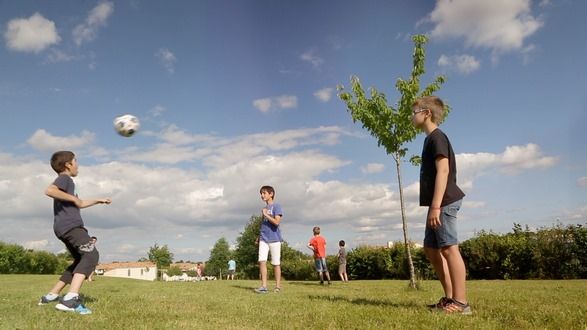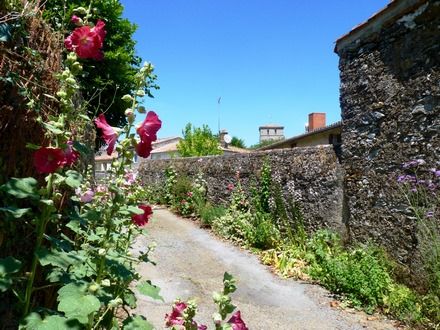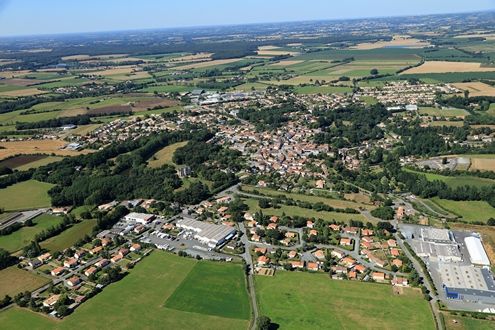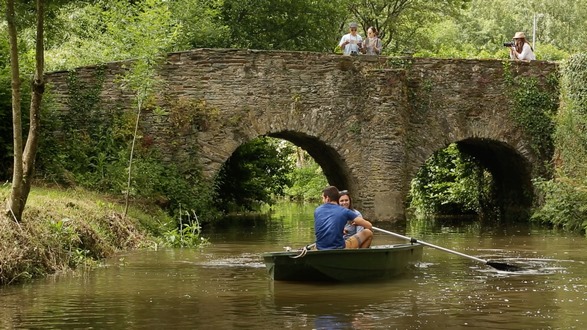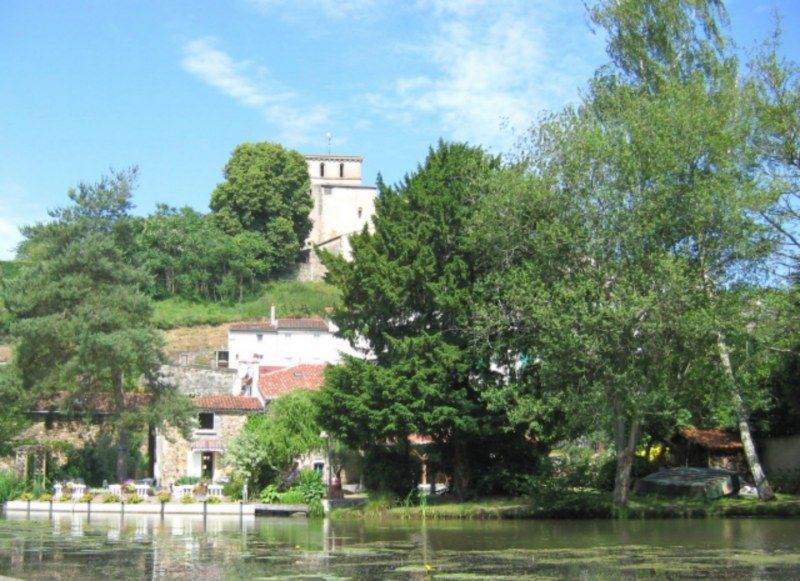Perched on a rocky outcrop, Mouchamps dominates the valley of the Petit Lay.
Prehistoric occupation is shown by the discovery of silex blades and polished stone axe heads at the locality called La Verrie.
The old parish church was abandonned in ruins in the 16th century, it has completely disapperead. It was replaced by the current Catholic church, the former castle chapel dating from the 12th century.
A fortified castle once surrounded the chapel and the whole was a fief of the powerful nobility based at the Parc Soubise : the Lusignan, Parthenay and later the Rohan families.
The protestant church shows the existence of a Protestant community in Mouchamps, this is a leftover from the support of the Reformist movement by the above families in the 16th century, part of the population of Mouchamps followed the nobles into the Reformed Church.
Some old houses have retained Renaissance architectural elements, they are scattered around the town and the surrounding villages and bear witness to the wealthy period enjoyed in the late 16th and early 17th centuries.
Bourgeois houses from the late 19th and early 20th century are evidence of a class which dominated political and economic life in the town at that time.
At the beginning of the new millennium Mouchamps is a small rural town of 2700 inhabitants with 250 agricultural enterprises.
Today, Mouchamps offers an ideal place to nature-lovers and is also playing the tourist card : situated near the Grand Parc of Puy du Fou, tourists can stay in a village of holiday chalets together with the camp-site this is « Le Hameau du Petit Lay ».

